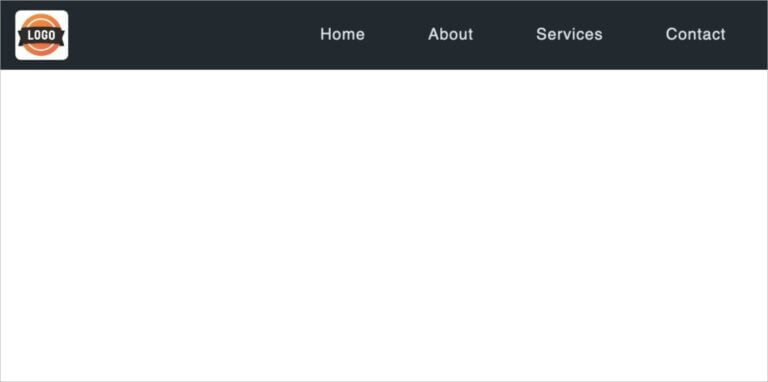
Scaling, optimization of workflows, and automation are all issues businesses face as they grow. As a business grows, managing its human resources becomes more difficult.
A Human Resource Management System (HRMS), a specialized software designed to assist with HR activities, can be used to manage all your HR tasks.
Let’s now look at common HR problems and how HRMS software can solve them.
Table of Contents
1. Routine HR tasks
The HR department in many companies is faced with a problem.
Although HR managers want to create a better work environment for employees and improve their overall performance, they often face mundane administrative tasks such as answering questions and processing employee information.
Companies can use a Human Resource Management System to address these everyday tasks. Let’s take a look at how an HRMS can improve productivity.
- Reduces paperwork. An HRMS reduces paperwork. It standardizes processes for employee information, including employment history, licenses and certifications, education, skill, performance, compensation information, etc. It also allows for hiring, salary changes, and other functions.
- It speeds up the creation of documents. An HRMS enables HR managers to keep all employee data in one location and quickly create any document based on that information. An HRMS eliminates the need for HR managers to go through piles of paperwork to generate employee ratings, stock plans, and other documents.
- It saves time. An HRMS can help you save time by storing all your information in one place and by organizing all administrative tasks.
2. Monitors KPIs
Key Performance Indicator (KPI) measures how well employees or the company achieves its business goals. An HRMS can automate the process of measuring what matters.
An HRMS can monitor the following KPIs:
- The duration of the position
Employee productivity drops if they stay in the same job for too long. An HRMS’s task is to track how long employees visit in the same position and remind managers when it’s time for promotion.
- Retention of employees
The retention rate measures employee retention and indicates job stability within a company. A company can lose much money if an employee leaves and has to find a replacement. An HRMS monitors talent retention and can monitor formal retention strategies that improve overall productivity.
- Absenteeism
The time an employee is absent for sickness, delays or other reasons. An HRMS keeps track of time and attendance quickly and accurately without making any errors.
- Time is key to achieving your goals.
This KPI measures efficiency and time taken by employees to achieve specific goals.
Bamboo is an excellent example of a highly efficient HRMS software, which allows employees and companies to monitor critical KPIs easily.
Bamboo HRMS provides convenient KPI monitoring.
3. Manage employees efficiently
Automating specific processes and reducing repetitive administrative tasks within a company can improve overall efficiency. Many HRMS allow you to easily collect and automate data and increase visibility through charts and graphs.
These are the main features an HR management system can provide to improve employee management.
- Time & attendance management
This feature records employees’ hours worked and ensure employees receive overtime compensation. This information can’t be monitored without an HRMS and is therefore difficult to track without losing details.
- Management of training
This feature tracks and reports on instructor-led training programs and courses for employees. It manages training curriculums, records, history, schedules, and grading.
An HRMS can help you manage your payroll effectively. Payroll mistakes can lead to financial ruin. An HRMS allows you to calculate your pay checks, manage the pay schedule and guarantee accuracy.
- Performance Management
Employee performance is usually monitored over time, and feedback is typically given once a year.
It takes time and effort to store all of this information. Companies can receive 360-degree feedback with an HRMS. Employee performance will be positively affected if performance data is constantly recorded.
Performance management data can also provide deeper insight into compensation, rewards, planning professional objectives, and so forth.
Bamboo HRMS provides immediate feedback and monitors employee performance.
- Onboarding and hiring
Are you able to onboard your employees quickly, efficiently, and easily? An HRMS could be the right tool for you. An HRMS can improve the efficiency of onboarding.
- Controlling the onboarding process
- Clarify the roles of each employee
- Companies can monitor their progress
- Newcomers should feel connected
4. Improves employee self-service
Modern HRMS software has a lot of demand for employee self-service. Employees frequently have questions about terms, conditions and salaries. It’s difficult for HR to answer every question individually for hundreds of workers.
A computerized HR employee mobile app software allows employees to be more self-service and is more satisfying. An HRMS will enable employees to manage their paid time off, sick leave, and ability to work remotely. HRMS software often gives employees accounts they can access to find the necessary information.
Employees have access to all HR-related information through Beehive HRMS. It makes it easy to get answers to questions regarding attendance, policies, and salary slips.
5. Cost-effective
Automating tedious data entry tasks can save your company time and money. Automation eliminates the need for paper in a company’s daily operations and allows them to use digital technology.
Let’s suppose we have a small business with 100-300 employees. Our company will require at least one employee to handle the monthly payroll.
Sage’s study shows that management systems can cost between $1 and $3 per employee per calendar month. It is much lower than the salary of an HR manager.
Companies also require employees to manage and track leave and attendance. Instead of hiring employees to manage these processes, companies can use an HRMS to automate mundane managerial tasks.
6. Eliminates human error
Human error is another primary source of unneeded business cost. Human error is another primary source of unnecessary business cost. HR tasks can automate to reduce the chance of common errors like double entries.
Employees also have the option to double-check their work in case there are typos.
7. Privacy and data security
An essential step towards protecting employee data is investing in an HRMS. Employers are responsible for protecting employee data and preventing misuse. Encrypting personal data helps protect it from hackers and unauthorized users.
An HRMS also has payroll functionality. It makes it easier to process payroll.
Bamboo HRMS software, for example, uses the defence-in-depth security principle to protect employee data at all levels. It offers weekly vulnerability scans and an annual penetration test with security metrics. It prevents data breaches in businesses.
Your HR department shouldn’t be wasting their time. Instead, choose a modern solution to all your HR-related tasks.





